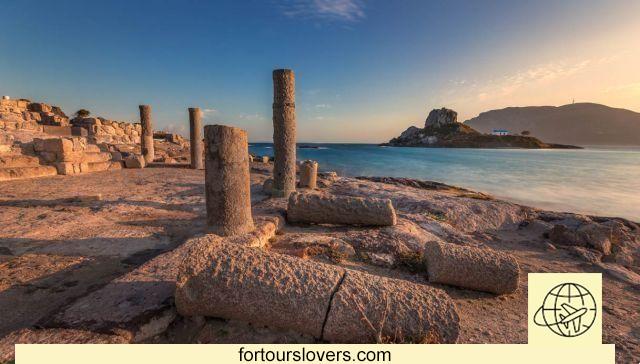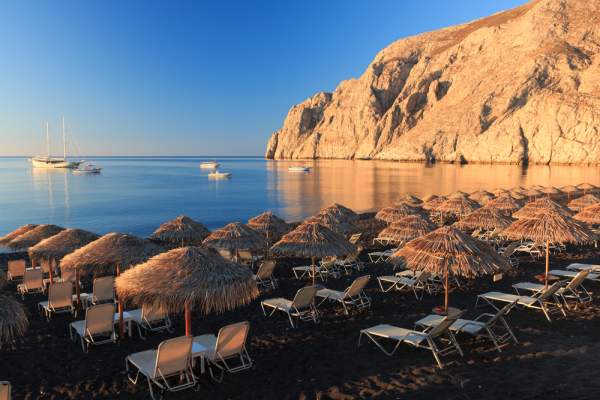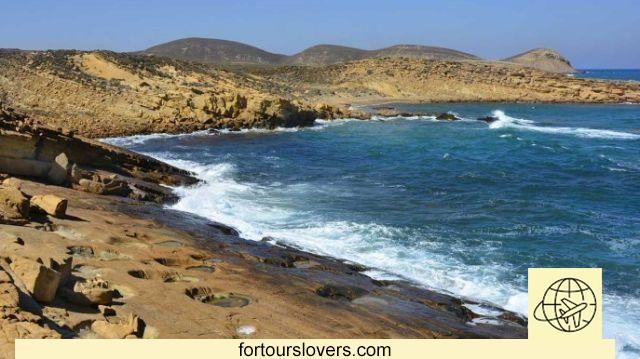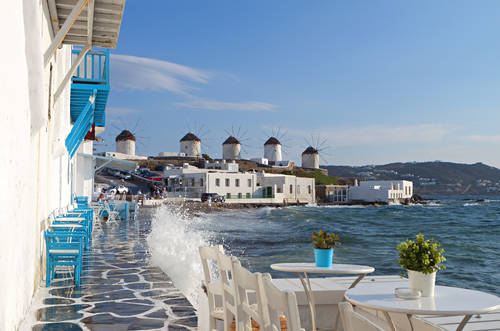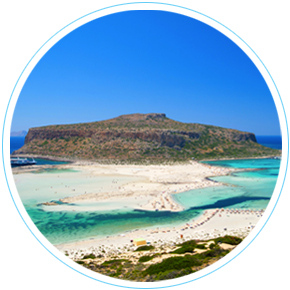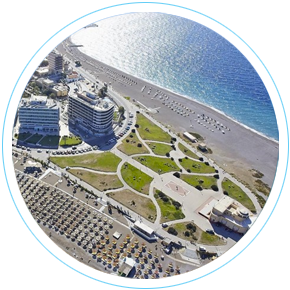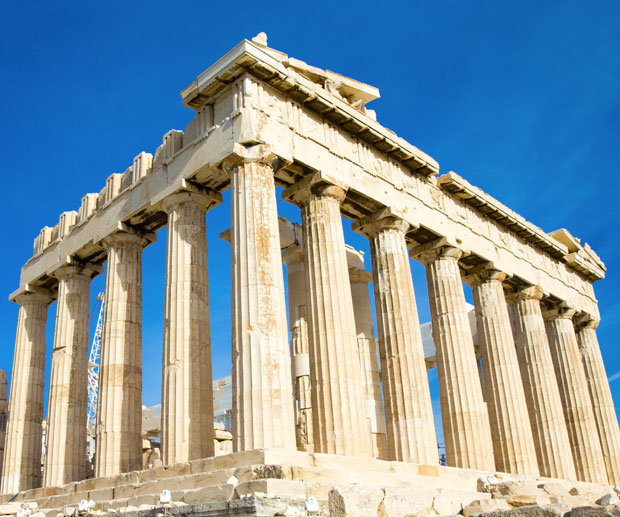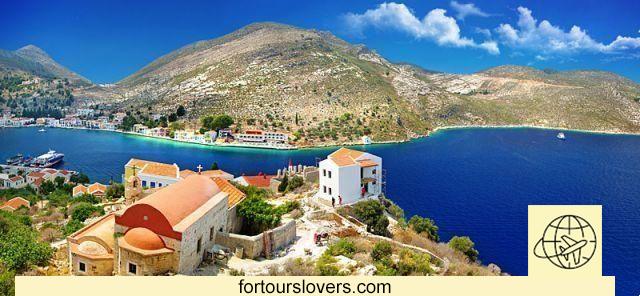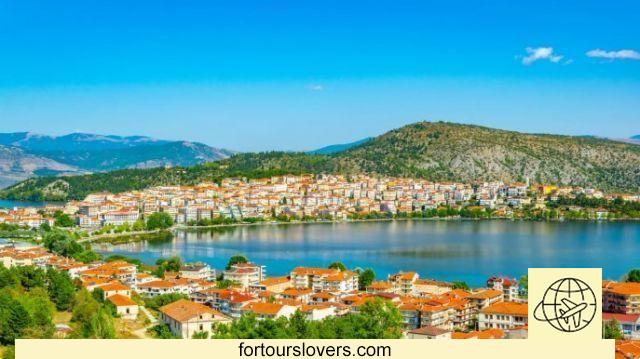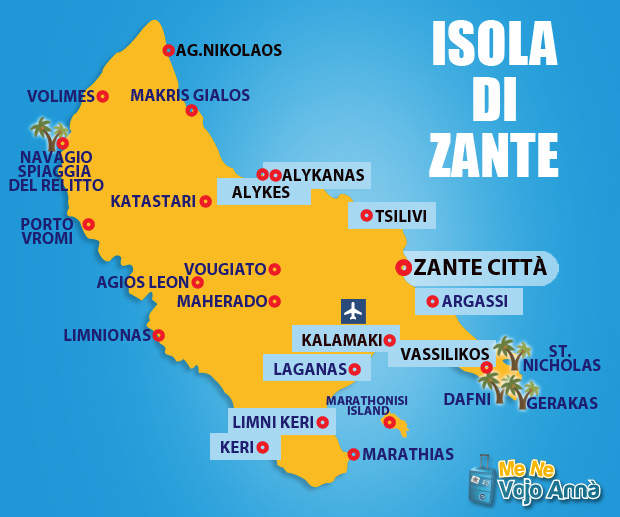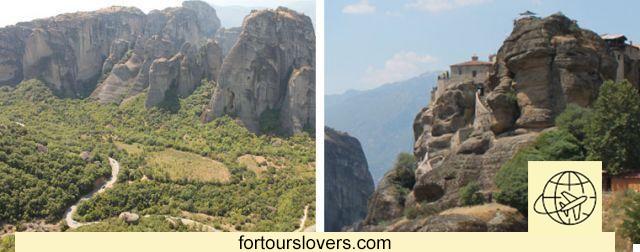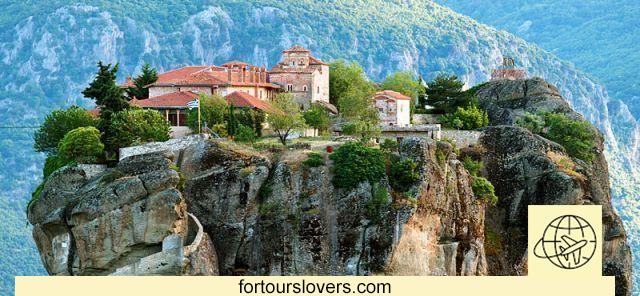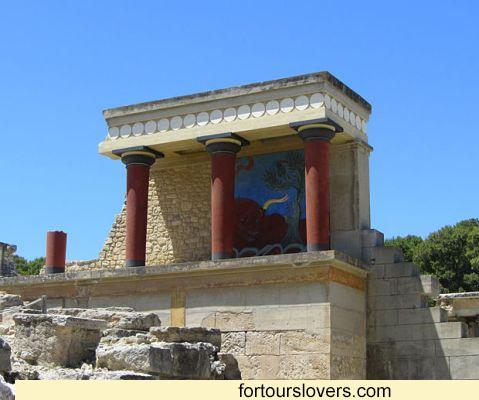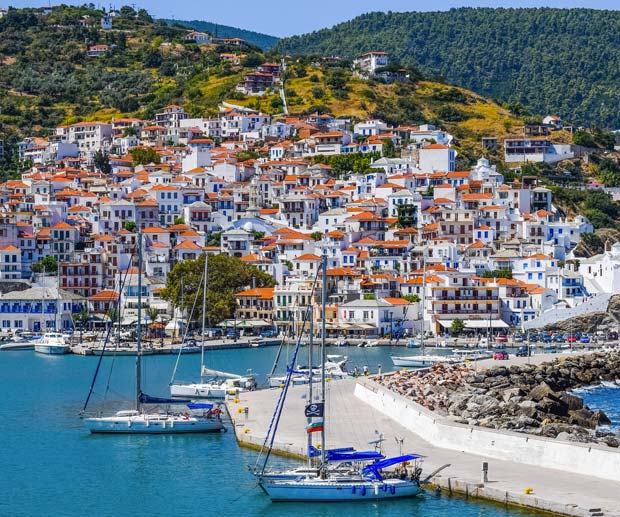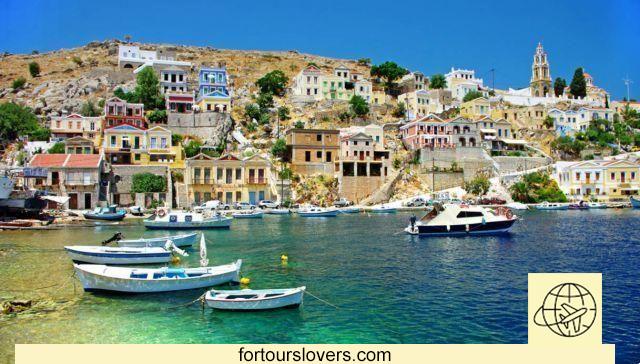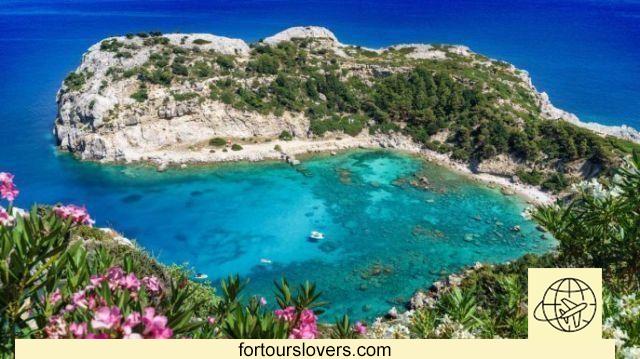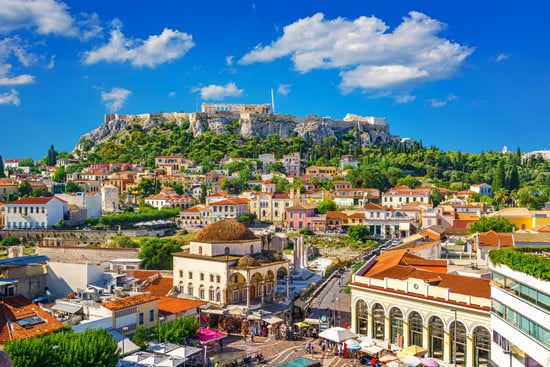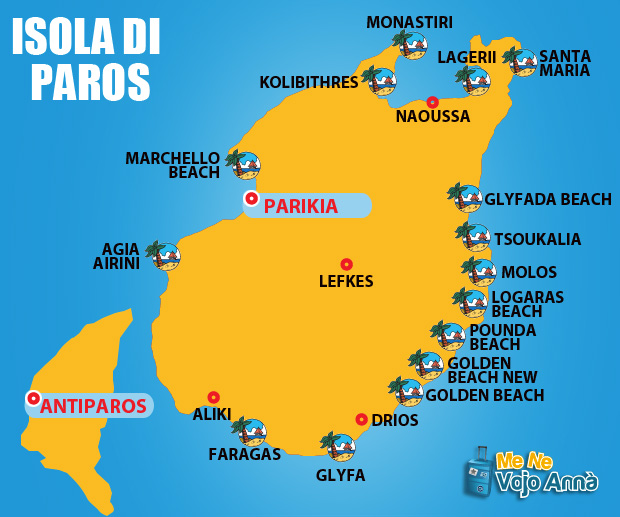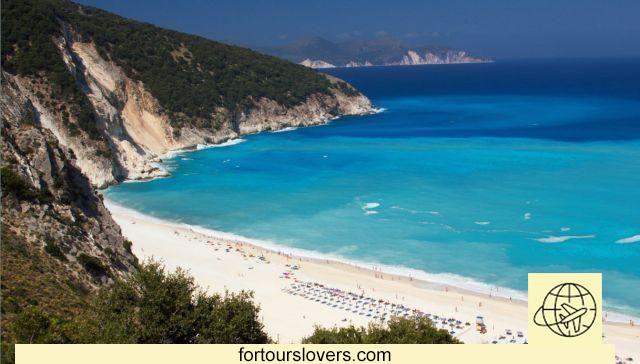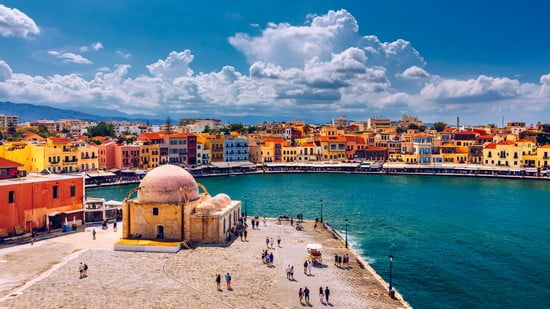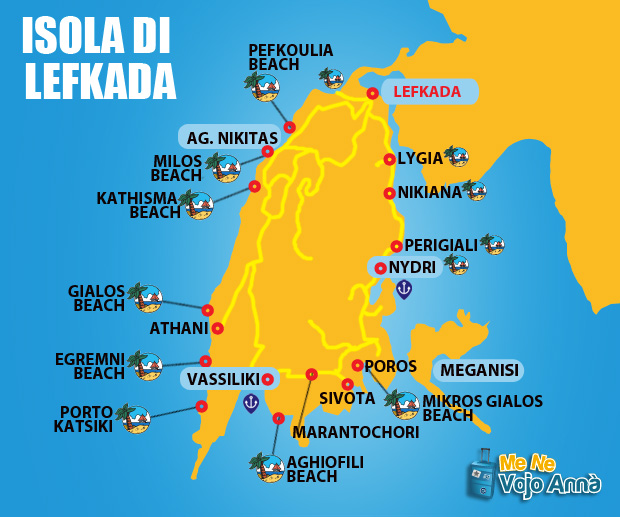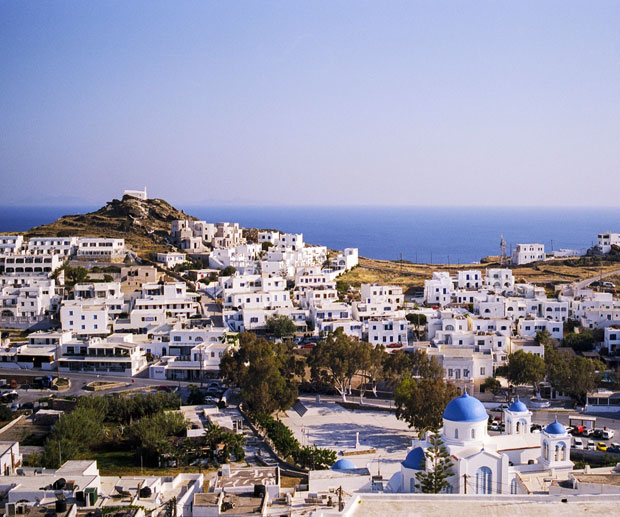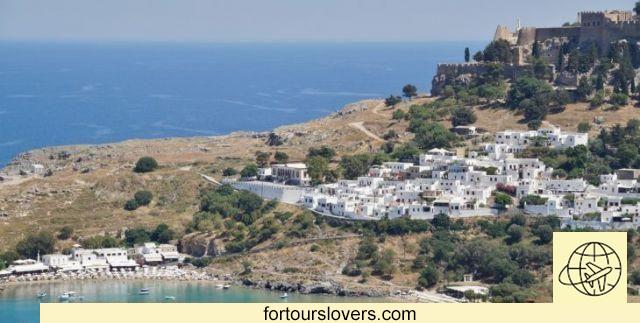
Rhodes
11 things to do and see in Rhodes and 3 not to do"Isola delle Rose", "Isola dell'ibisco", "Isola del Cervo": those just mentioned are only three of the appellatives by which it is commonly called Rhodes, the largest of the Dodecanese islands. Appellations which, as is evident, refer to both the plant species that the fauna of the territory. In fact, in addition to hibiscus and roses (from which it seems the name derives) there are bougainvillea, jasmine and of course olive trees, vines, oranges and all the typical shrubs of the Mediterranean scrub. On the animal rights front, however, it should be remembered that pastoralism remains one of the most practiced activities, not to mention the huge presence of cats, which soon became a distinctive sign of the island. But Rhodes also deserves from an architectural point of view. There old City, in the capital of the same name (north-eastern side of the island), it is absolutely worth a visit, even more after UNESCO protection of 1988. Recognition that, together with the tax relief regime that historically accompanied the tourist development of the Greek islands, has given great impetus to the local economy which, vice versa, in recent years, has had to face the effects of the crisis that has affected all the Greek nation. Nonetheless, the tourist influx remains flattering and the social difficulties are certainly less than in large urban centers. Above all, the extraordinary beauty of the places (See Lindos in 'cover image), including the many beaches scattered from north to south. Below we see together the main attractions of the island. Happy reading.
1 Old Town
Unlike other Greek locations, the city of Rhodes (capital of the island of the same name) it is not only famous for its classical remains but also for its medieval ones. The "merit" is of the Knights of St. John who inhabited the island from 1309 to 1522, when they were forced to flee to Malta, defeated by the Ottoman militias of Suleiman the Magnificent. In the more than two centuries of permanence, this transnational chivalric order built inside mighty walls a beautiful city divided between a residential area, where was - and still is - the fortress (see point 3), and an area dedicated instead to trade inhabited by Greeks, Turks and Jews. The medieval urban imprint has endured over the centuries, also thanks to the restructuring and restoration interventions carried out during the Italian domination of the island (1912-1943). In fact, in addition to preserving the sui generis urban fabric, the Italians also valued theOttoman imprint sacrificing a little, however, the remains of theancient acropolis on the summit of Monte Smith. The theater, the stadium and the temple dedicated to Apollo are somewhat remodeled even if the panorama it abundantly compensates for the disappointment for the few traces of the Greek age left. In short, the Old Town of Rhodes, for thirty years under Unesco protection, is the inevitable starting point for discovering the beauties of the island, many of which, among other things, are located within the same walls. Below we go to see some of them.
2 Archaeological Museum
The first, and perhaps most important attraction of the Archaeological Museum of Rhodes, is the palace itself in which the various rooms have been set up. We are talking aboutHospital made in the fifteenth century by Knights of the Order of St. John who reigned on the island. The building, visible from the entrance to the port, has a large internal courtyard, in the center of which stands one stone statue of a lion holding the head of a bull with its front legs. Also in the courtyard we can admire a beautiful majolica floor from the Karpathos (Karpathos), another island in the Dodecanese halfway between Rhodes and Crete. Inside, however, a part of the museum houses tombstones, coats of arms and other findings relating to the domination of the Knights, while the other part is dedicated to ceramic finds from the Rhodian school, among which the statue of "Aphrodite taking a bath" dating back to the XNUMXst century BC. C. The Archaeological Museum of Rhodes was one of the buildings that benefited from the intense restoration campaign carried out by the Italians who administered the island for over thirty years.
È open from Tuesday to Sunday from 08:00 to 16:00 (Monday Closed).
3 Palace of the Grand Master
Another unmissable stop in medieval Rhodes is the Palace of the Grand Master. This building, even more impressive than the hospital we mentioned earlier, was there fortress of the Knights of St. John which for over two centuries reigned on the island, making it the outpost of Christianity in the fight against the Islamic world. Therefore the headquarters in which, if necessary, to give hospitality to the population in the event of an enemy attack. It is therefore not surprising the grandeur of the building, very recognizable by its twin towers on the sides of the entrance portal. With the victory of Suleiman the Magnificent and the ousting of the Knights in Malta, the structure was used as a prigione. Around the middle of the 800th century a violent one esplosione it destroyed a large part of the palace and it was necessary to wait until the 30s of the following century for the damage to be remedied. To do so, like many other historic buildings on the island, were the Italians with the mandate to transform the fortress into residence of Vittorio Emanuele III e Benito Mussolinthe. This explains the presence of many decorative elements extraneous to the artistic tradition of the island even if, it must be said, neither the king nor the head of fascism ever stayed in the palace.
The Grand Master's Palace is open from Tuesday to Sunday from 08:00 to 15:00 (from May to October 08:00 to 20:00).
4 Via dei Cavalieri
Having spoken of theHospital of the Knights of San Giovanni (seat of the Archaeological Museum) and Palace of the Grand Masters, one cannot fail to stop also on the road that connects the two buildings, the wonderful one Street of the Knights (in Greek Odós Ipotón). In Europe, one of the few medieval residential streets to have kept his almost intact late Gothic imprint. The credit, here too, goes to the Italians who for thirty years, from 1912 to 1943, administered the island by restructuring, without distorting them, the many treasures of the old city. To see the residences of "Langues", the hostels in which the Knights of the Order gathered according to the nationality. Only four remain - Italy, France, Provence and Spain - and today they are home to foreign consulates and embassies.
5 Port of Mandraki
Mandraki is not just the marina where yachts and sailboats dock on the island but it is also one of the busiest areas of Rhodes. Rental businesses, souvenir shops, bars, restaurants, the market and tourist information office are all located in close proximity to this area, which leads to the old town via the world famous Gate of Freedom, one of the nine city gates that allow entry into the medieval part. In addition to the strategic location and the services present, what makes the port of Mandraki one of the main attractions of Rhodes are the two column at the entrance to the water mirror. Columns surmounted by two bronze statues depicting Elafos and Elafina the deer that, according to a famous legend, would have hunted the snakes that once infested the island. According to another legend, the columns would rise where once stood the Colossus of Rhodes, gigantic statue representing the god Elios, protector of the island. In reality it seems that the statue was found in the acropolis, in an elevated position with respect to the port, and that following a violent earthquake it fell into the sea and remained there for centuries. Then, with the Arab conquest in 653 the inglorious end of the monument, cut into blocks and sold to a foreign merchant. Legends aside, what is certain is that on the occasion of the Athens 2004 Olympics, the municipal administration toyed with the idea of rebuilding the colossus of Rhodes, even if nothing more was done due to the cost of the undertaking.
6 Nea Agora
Rhodes is divided into two parts: the old City, on which we have focused so far, and the new city, developed mostly in the twentieth century. To divide them, the port of Mandraki. The most representative buildings of the modern part are in fact almost all on the seafront facing the port. We are talking about the Orthodox Cathedral, the Post Office Building, the Town Hall, the Prefecture and the New Market. The latter, in particular, has been rewarded by the advent of tourism, transforming itself from the fish market as it was into a sort of Arabian bazaar in which there are bars, restaurants (including some Italians) and typical shops. To the popularity of the "Nea Agorà", as the market is called, the neighbor certainly contributed bus parking, an obligatory passage for anyone who does not have a car and / or scooter. At that point, while waiting for the bus, visiting the market is quite natural. In fact, it is worth investigating all the public buildings just mentioned: their architecture, in fact, betrays theItalian imprint, especially that of the great Florestano Di Fausto absolute protagonist, during fascism, of the Libyan and Rhodian architectural scene. Not to be missed!
7 Filerimos Monastery
Woe to exchanging a part for the whole. The attractions we have dealt with so far are located in the homonymous capital of the island, where more than half of the stable population of the entire territory is concentrated. Another fairly populated urban center is Ialyssos which is just over 10 kilometers from Rhodes. The popularity of Ialyssos is mainly due to the presence of the Mount Filerimos, a small hill of 267 meters that can be reached both by car and on foot. The latter solution is preferred by tourists, enticed by ease of the path to reach the panoramic point at the top where one stands great cross. Just under this cross stands an ancient Byzantine monastery. The first building of the temple dates back to Xth century, even if little or nothing remains of the original church. Most of the works were destroyed by the Ottomans who succeeded the Knights of the Order of St. John in the XNUMXth century. Also in this case the Italians provided for the restoration of the monastery where until the end of the Second World War lived and worked a community of Capuchin Friars. In front of the monastery, moreover, there are the remains of the ancient acropolis of Ialyssos. As already mentioned with regard to Monte Smith (see point 1), in this case too the archaeological finds are not great, at least when compared to those ofacropolis of Lindos which we will talk about later (see point 9).
8 Thermal baths of Calitea
Le thermal baths of Kallithéa, recently renovated with the economic contribution ofEuropean Union, are another testimony ofItalian architectural imprint on the island. Although, in fact, they had been known for millennia, it was the Italians who made the most of these spas, which are about ten kilometers from the capital Rhodes. The then governor of the Dodecanese Mario Lago first (1927) he commissioned a scientific study on the curative properties of water (indicated to soothe many intestinal ailments) and then gave a mandate (1928) to a well-known architect, Pietro Lombardi, to design what would become the "Regie Terme di Calitéa", whose inauguration (1 July 1929) was also attended by King Vittorio Emanuele III. The Second World War caused considerable damage to the structure, for many years used by the beaches in the meantime which had sprung up all around as a deposit for umbrellas, sunbeds and deck chairs. In 2002 the project for the recovery of the area, completed in 2007 maintaining the original Italian architectural imprint. The Kallithéa complex hosts festivals, cultural events, business meetings and receptions all year round. In summer, it also functions as a bathhouse allowing access to the beach in the immediate vicinity.
Open every day from 08: 00 to 20: 00. More information on Official site: www.kallitheasprings.gr (English version available).
9 Acropolis of Lindos
There are those who claim that theacropolis of Lindos alone is worth a trip to Rhodes. In fact it is so but the speech can be easily extended to village below. A small village of white houses built without any preordained urban design but in compliance with some very specific aesthetic canons as in the best tradition ofMediterranean architecture. From the village you have to follow the signs for the acropolis which is located on one cliff 116 meters above sea level. The path is not very long but it is rather steep, which is why you can earn the top a donkey back. The Acropolis of Lindos is a perfect compendium of the island's history. In a small space, after all, there are architectural traces relating to the rule of the Knights and then gradually more ancient finds up to the wonderful temple of Athena Lindia of the IV century a. C. Worthy of particular mention, at the foot of the acropolis, a huge bas-relief depicting the bow of a trireme of war. On the pedestal in front of the sculpture, in ancient times there was the statue ofAdmiral Agesandro of Mikion, the work of Pythocritus, the artist of the famous Nike of Samothrace exhibited at the Louvre in Paris. Briefly said of history, the acropolis of Lindos is also valid from a landscape point of view. As you go up, marvelous views open up such as Vlycha beach, one of the most beautiful in Rhodes, and the even more suggestive cove of Agios Pavlos.
The acropolis of Lindos can be visited from Tuesday to Sunday from 08:00 to 15:00 (from May to October every day from 08:00 to 19:40).
10 Kamiros
After Ialyssos e Lindos it is a must to visit too Kamiros, most interesting site on the west coast of Rhodes. These locations, in fact, represent the three oldest settlements on the island and were part of the so-called Doric hexapolis, a confederation of cities that also included the island of Kos, Halicarnassus and Cnidus (the latter two in Turkey). Kamiros is an important archaeological site, which emerged following a long one excavation campaign started at the end of the nineteenth century and continued with greater vigor in the 30s of the last century by Italian Archaeological School of Athens. The remains found tell of a thriving city, dedicated to agriculture and commerce, and urbanistically organized on several levels. To decree the end of Kamiros, hence theanalogy with the fate of Pompeii and Herculaneum, it was in 226 a. C. a very violent earthquake. The earthquake destroyed a large part of the city, and the attempts at reconstruction carried out by the survivors were thwarted a century later, to be precise in 142 BC. C., from another terrible shock. In short, visiting the ruins of this city is an indispensable exercise for understanding habits and lifestyles of the Hellenistic age. An in-depth study which, however, is more complicated in high season due to the huge tourist turnout. The advice, therefore, is to visit the site early in the morning or in the late afternoon.
The archaeological site of Kamiros can be visited from May to October from 08:00 to 19:45.
11 The beaches of Rhodes
So far we have emphasized the history, culture and architecture of the island. However, Rhodes is also a renowned seaside resort which from May to October records a significant influx of tourists from all over the world. From the north to the south of the island there are so many beaches that it is hard to remember them all. Almost inevitable to start from Elli Beach, a stone's throw from the Aquarium and the Casino of Rhodes town. From its beach this beach undoubtedly has comfort and, despite the summer crowds and proximity to the center, the sea is always crystal clear. About 15 kilometers from the capital there is Faliraki, the “Las Vegas” of Rhodes. Until the 80s of the last century, Faliraki was nothing more than a small village on the east coast, then came the hotels, bars, restaurants and all the services of a modern tourist resort. Faliraki beach is huge and alternates rocky and sandy bottoms. The southern end is popular with nudists and naturists. Also in Faliraki there is a water park ideal for the entertainment of the little ones (www.water-park.gr). The thermal baths (and the beach) of Kalithéa first remember they are quite close, as well as not very far away is the famous one Anthony Quinn Bay, a rocky inlet that the military dictatorship (the so-called “Regime dei Colonnelli”) gave to the American actor for having shot the film “The cannons of Navarone” in Rhodes. The end of the dictatorship in 1974 made the donation void and today everyone can swim in the crystal clear waters of this bay. Just south of Anthony Quinn Bay is there Traganou beach, according to many one of the most beautiful on the island. Same scenario for the Stegna beach which, just like Traganou, combines the beauty of the sea and the beach with the great tranquility of the surrounding context. In short, ideal for those who want a holiday of total relaxation. In addition to the Acropolis, in Lindos there are the beaches of Vlicha, Agios Pavlos and Lindos Palace. All three are very beautiful, especially Agios Pavlos, even if they suffer from excessive crowding in the summer months. Those who want more tranquility than Lindos can head a little further south, a Lardos, where there is a long beach of sand and pebbles and above all a wonderful sea. At the southern end of Rhodes there is Prasonissi, one of the two favorite beaches for sailing, windsurfing and kitesurfing enthusiasts. The other is Ixia, on the north-western side of the island, not far from the capital Rhodes. In both locations there are shops and specialized centers available to both beginners and the more experienced.
1 Do not book cars, scooters at the last minute
For heaven's sake, Rhodes can also be toured in taxi e bus but, considering the size of the island, it is more comfortable in auto and / or scooter. Our advice, if you decide to rent a car and / or a scooter, is to do it in time, especially if the holiday period is in the high season. If, on the other hand, you prefer to negotiate on the spot, the advice is not to stop at the first "rent a car" but to compare more than one before choosing.
2 Do not wear inappropriate clothing when visiting churches, museums and villages
Rhodes is a tourist resort, accustomed to nudity and skimpy clothing. Precisely for this reason, however, it is good practice dress appropriately according to the context. For example, going around in a bikini or shirtless in the old town is not a big deal. Likewise, when you enter a church or visit one of the villages in the hinterland, there is no point in dressing up as at a beach party.
3 Watch out for tourist traps
Rhodes is full of clubs, taverns and restaurants. In some you eat well, in full respect of the Greek gastronomic tradition; in others, however, the cuisine is definitely below expectations. In hindsight, this happens to a little bit in all tourist resorts and partly also depends on the value attributed to food in general. If you are faithful to the motto "eat local", then it is good to choose without haste where to go to eat, perhaps by helping you with the reviews on the net or by getting advice from someone in the place. In conclusion, watch out for the so-called tourist traps and pay attention to the price of fish, generally very expensive.




